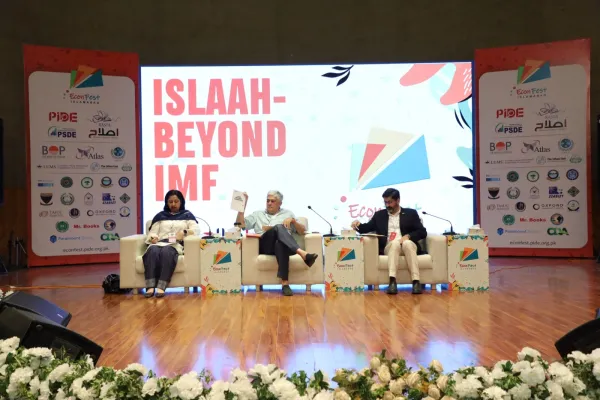i ECONOMY
Growing regional disparities and uneven development continue to be a serious concern for the Pakistani policy experts in the economic, social, and geographical context, which may compromise economic growth and development. Talking to WealthPK, Mian Rajan Sultan Peerzada, President of the Association for Development of Local Governance (ADLG), said, “As a developing country, Pakistan is affected by regional inequality in several ways, such as differences among the provinces, districts, and rural and urban areas. This complex problem has significant effects on how the country develops.” “In terms of urban and rural development, Pakistan exhibits typical dual-structural characteristics. The rural areas often face economic challenges characterized by limited access to basic infrastructure, education, healthcare, and employment opportunities. Neglecting the development needs of these areas not only perpetuates socio-economic disparities but also hampers the potential for inclusive national growth,” Sultan added. “To address persistent regional disparities, a comprehensive policy approach is essential.
The government should prioritize equitable resource allocation, ensuring a fair distribution of financial and natural resources among the provinces,” the ADLG president emphasized. “Infrastructure development, particularly in less developed areas, is crucial for fostering economic growth, including improving transportation networks and basic amenities. Education reforms should aim to make quality education accessible to all, with targeted investments in underprivileged regions,” he suggested. Dr. Adnan Rafique, political scientist and public policy analyst of the Planning Commission, told WealthPK, “Unequal distribution of resources – both natural and financial – has been a major factor in regional disparities. The provinces with abundant resources tend to have better-developed infrastructure, education, and healthcare systems. Punjab and Sindh are generally more resource-rich and have seen more industrial growth compared to Balochistan.” “The strain on major urban centres in Pakistan can be mitigated through a strategic focus on second-tier cities.
This approach holds the potential for more equitable economic growth,” he stated. It is imperative to recognize and capitalize on the significant opportunities inherent in these secondary urban hubs. Swift attention and concerted efforts are warranted to expedite the realization of this untapped potential, thereby contributing to a more balanced and sustainable national economic development. He further said the Ministry of Planning, Development, and Special Initiatives had launched a five-year (2022-27) project – comprising special development initiatives – for 20 poorest districts across Pakistan at the cost of Rs40 billion, which was a great initiative. Multidimensional Poverty Index (MPI) scores were used to identify and choose the 20 districts, which included 11 districts from Balochistan, five from Sindh, three from Khyber Pakhtunkhwa, and one from Punjab. Many of these districts, especially in Balochistan and Sindh, have been directly affected by the floods.
Credit: Independent News Pakistan (INP)









